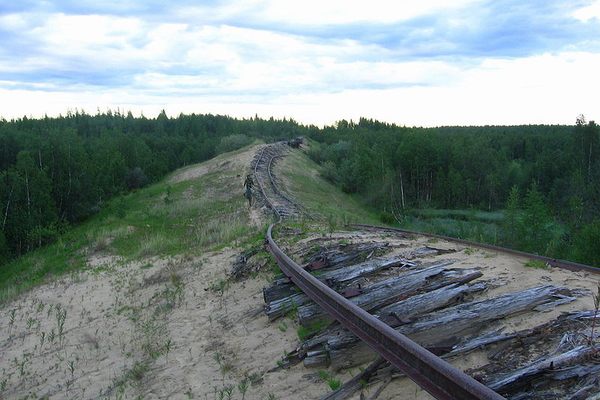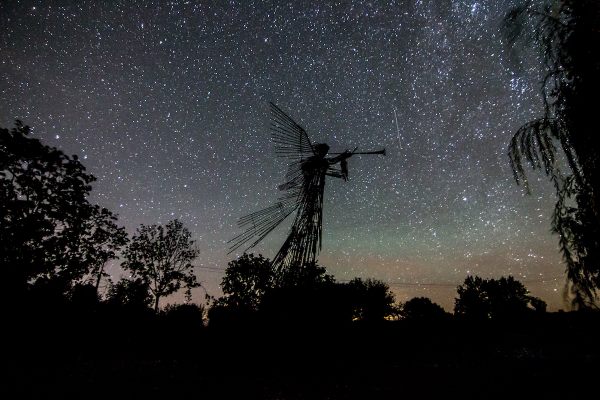Tunguska Event Epicenter
Site of the largest impact event to occur over land in Earth's recorded history.
On June 30, 1908, at 7:17 in the morning, a catastrophic event wreaked havoc on the Podkamennaya Tunguska River basin. Eyewitness accounts from Siberian villagers described a bright blue light that streaked across the sky, followed by a violent flash and a barrage of noise much like the sound of artillery fire.
Tremors shook the ground, while a powerful shockwave shattered windows and knocked people off their feet. Effects of the blast were felt thousands of miles away. Fluctuations in atmospheric transparency were recorded across North America, and throughout Europe and Asia, the night sky was so bright that a newspaper could be read in its light for weeks afterward.
Immediately following the so-called “Tunguska Event,” there were few scientific attempts to explain the mysterious occurrence. In fact, more than ten years passed before the first scientific expedition, led by the Russian mineralogist Leonid Kulik, attempted to visit the event’s epicenter.
When Kulik and his team finally arrived in 1927, what they discovered shocked them. At that time, it was assumed that the Tunguska Event was actually a meteorite impact. However, at ground zero there was no crater to be found.
Instead, trees at the epicenter stood vertically, scorched and stripped of their bark. Farther out, trees were toppled over on their sides and pointing away from the center.
In fact, the explosion leveled 80 million trees over 830 square miles of forest. But what could cause such a violent event without leaving so much as a dent in the ground? This question has perplexed scientists for over a century, and the Tunguska Event debate remains a heated one.
Today, the most favored explanation involves the mid-air explosion of a large meteoroid or comet. At about 28,000 feet above the Earth’s surface, many scientists believe, a chunk of rock or ice measuring tens of meters across broke apart from the heat and pressure of the atmosphere.
Traveling at a speed of over 33,000 mph, this explosion would have created a shock wave about 1000 times more powerful than the bomb dropped on Hiroshima. Directly below the blast, the trees were stripped but remained standing because the shockwave would have been traveling vertically downward. Further out, however, the shockwave would have been traveling in a more horizontal direction, explaining the vast area of flattened forest.
This scenario would also account for the lack of a crater. It is thought that the “impacting” body would have been torn apart into small enough pieces that no large chunks reached the surface. Furthermore, those in favor of the comet hypothesis believe the brightened night sky was a result of noctilucent clouds: high-altitude clouds made of highly reflective ice that would have formed from the water vapor injected into the atmosphere by the exploding comet.
Though the scientific explanation might sound quite complicated, even wilder Tunguska theories have proliferated over the years. Among the more far-fetched culprits of the blast are a tiny black hole passing through the Earth, a UFO crash, and even Nikola Tesla’s Wardenclyffe Tower.
Know Before You Go
The closest village to the Tunguska Event epicenter is the town of Vanavara, located about 40 miles south-southeast of the epicenter.


















Follow us on Twitter to get the latest on the world's hidden wonders.
Like us on Facebook to get the latest on the world's hidden wonders.
Follow us on Twitter Like us on Facebook